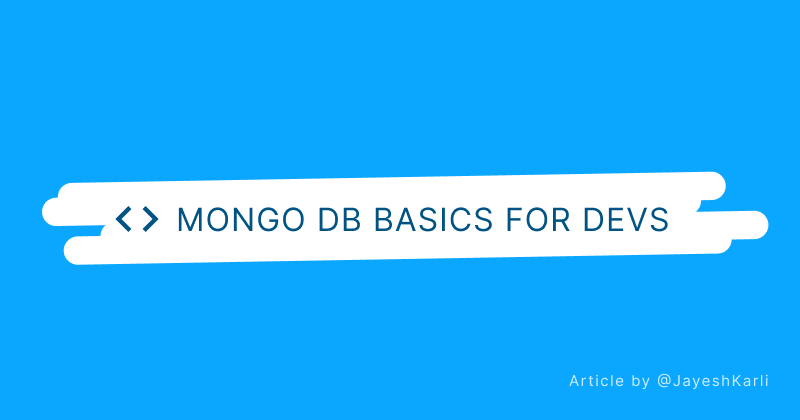Mongo DB Basics
 Jayesh Karli
Jayesh Karli
MongoDB is a popular open-source NoSQL database management system that is widely used for its flexible and scalable data model. Unlike traditional relational databases, MongoDB uses a document-based data model, which allows for more flexibility and scalability when it comes to storing data. In this article, we will delve into the concepts of collections, databases, and document hierarchy in MongoDB.
Collections in MongoDB
In MongoDB, collections are the equivalent of tables in a relational database. A collection contains a group of related documents, and each document in a collection represents an individual record in the database. For example, you could have a collection for users and another collection for orders. Each collection can contain documents that have different structures, allowing you to store data in a flexible and scalable way.
Databases in MongoDB
Databases in MongoDB are a way to organize collections. A single MongoDB instance can contain multiple databases, and each database can have multiple collections. This allows you to separate data into different databases, making it easier to manage and maintain your data. For example, you could have a database for your development environment and another database for your production environment.
The Document Hierarchy in MongoDB
The document hierarchy in MongoDB is straightforward. At the highest level, you have a MongoDB instance, which can contain multiple databases. Each database can contain multiple collections, and each collection can contain multiple documents.
It is important to understand the document hierarchy in MongoDB because it affects how you store and retrieve data. For example, you may want to store data about users in one collection, and data about orders in another collection.
When working with collections and documents in MongoDB, it is also important to understand the data model and how it affects the way you store and retrieve data. MongoDB uses a document-based data model, which allows you to store data in a flexible and scalable way. This means that you can store different types of data in a single document, and you can easily retrieve data based on specific criteria.
For example, let's say you have a collection of users, and each document in the collection represents a single user. You could store information such as the user's name, email, and address in the document. When you need to retrieve a specific user's information, you can easily do so by querying the collection based on specific criteria, such as the user's email address.
The Benefits of MongoDB's Document Hierarchy
One of the key benefits of MongoDB's document hierarchy is that it allows for more flexibility and scalability when it comes to storing data. Unlike traditional relational databases, MongoDB does not require you to define a schema for your data, which means that you can store data in a more flexible and scalable way.
Another benefit of MongoDB's document hierarchy is that it allows for better performance when it comes to querying data. MongoDB uses indexing to optimize query performance, and you can create indexes on specific fields in a collection to improve query performance. This means that you can quickly and easily retrieve data based on specific criteria, making it ideal for modern web applications that require fast and efficient data retrieval.
Finally, MongoDB's document hierarchy also makes it easier to maintain and manage your data. Since you can store data in a flexible and scalable way, you can easily make changes to your data model as your application evolves. This means that you can easily adapt your data model to meet the changing needs of your application, without having to make major changes to your database structure.
In conclusion, understanding collections, databases, and document hierarchy in MongoDB is crucial for effectively using the database.
Subscribe to my newsletter
Read articles from Jayesh Karli directly inside your inbox. Subscribe to the newsletter, and don't miss out.
Written by

Jayesh Karli
Jayesh Karli
I am a Software Engineer from India. I have professional experience as a full-stack java developer. I enjoy learning new languages and technologies to expand my knowledge.